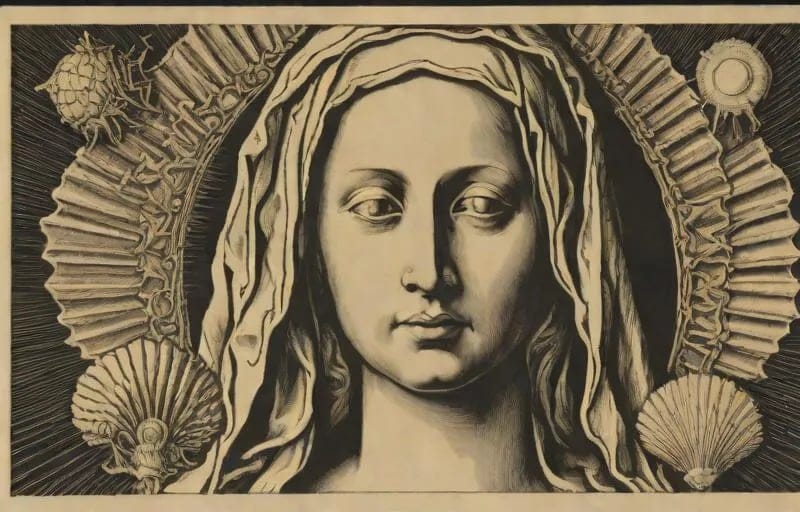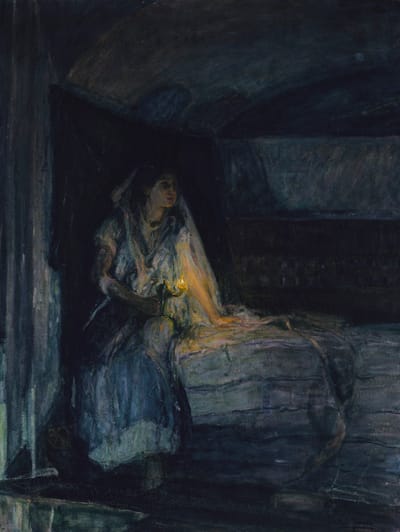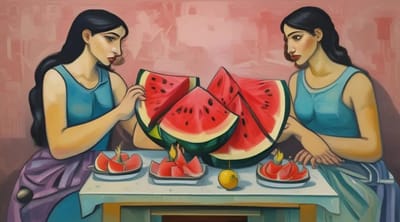On Being a Tiny Pilgrim

I grew up with a love of Jesus. He is considered a deity by secular Hindus, especially people like my parents who attended Catholic schools in India. I grew up thinking of him as the Superhero of Kindness. A live and let live sort of guy. Peace and love. I’m pretty sure I believed he was alive in the 1960s and was friends with Elvis.
So when Jimmy Campbell stuck his face in my face in second grade, his snotcicles invading my personal space, and told me that I was going to go to hell because I wasn’t Christian, I was genuinely hurt and confused because I really thought Jesus and I were simpatico.
I knew about Jesus because of a few beautiful objects in my childhood home. In particular, there was this tall decorated candle with an image of the Mother Mary holding a baby Jesus in the manger. We didn’t often light the candle because it was fragile and precious (I think it was my dad’s from when he first came to this country), but we would often stick incense sticks in the remnants of the candle at the bottom of the jar. That candle now sits in my altar at home.
Then there was the altar of the mother, the Washtub Mary in the northeast corner of our backyard that some previous homeowner had constructed as a place of worship and meditation perhaps — at least that’s how I received it. I retreat to that place often in my mind, as I would be perched there under the pine trees often at dusk, or during breaks from playing on long summer days.
The altar and foreground was made of thick, durable plaster that withstood time. It wasn’t actually a Washtub Mary, it was much smaller, a small blue Mary in a grotto. I found that via internet research, convinced that there were more of them out there. That ours couldn’t be the only family with this gift on their land.
During the cold months, pine needles would fall all over the sacred space, and my sister and I would bunch them up to create little natural brooms we’d use to sweep the foreground clean. We’d light little candles alongside the statue of Mary when my mother allowed us to use matches, and wed sit together, tracing our fingers along the arc of the grotto, which was cast as the interior of a shell, and along the imprints of scallops that had been embossed onto the plaster.
I knew what none of this iconography meant until 2022 when I took a nonfiction writing class with a bunch of Kentuckians who informed me that makeshift altars to the virgin mother were abound in the south, and that shells symbolized the divine conception.
Scallop shells are also prevalent markers along the Camino de Santiago in Spain, a pilgrim route to the tomb of Saint James in Santiago de Compostela, the grooves of the shell representing the different routes pilgrims travel from all over the world to arrive at this destination. My omnism has found a home on these roads of memory and reverence.
The beauty of metaphors is that they are inclusive. I have never visited a church on Easter, but I have handled a scallop and explored it thoroughly as a tiny pilgrim, resting in the corner of some small place, a vestige of blessings from gods who continue to find me when I am still and curious.






